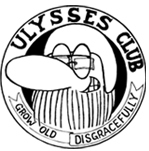The Latest News From UCARF
We Would Love to Hear About and See Your Branches UCARF News and Photos
Please Send Them to ken@ucarf.com
UCARF NEWS

ABSOLUTE CHAMPIONS!
In January, Kim was presented with a dry cheque by John Jannus and Peter Ogden to the tune of a whopping $5,000.00 for UCARF.
You may recall Kim’s previous praises of the three amigos of John Jannus, Peter Ogden and Phil Melhuish and their extraordinary selfless achievements of raising funds for charity, including UCARF.
HAPPY WINNER!

Jon Taylor #46773 was the lucky winner of a $20,000 Indian Scout motorcycle, first prize in the UCARF Biennial National Raffle. Generously sponsored by Polaris Australia and Ulysses Club Inc., Jon’s new ride included on road costs and GST.
2018 Report by Professor Eric Morand
UCARF Rheumatology Research Funding, Monash University
With the backing of generous donations from UCARF over several years, rheumatic disease research at Monash has built a steady research program aiming to develop better treatments for rheumatoid arthritis and related rheumatic diseases. In 2018, this has taken two major directions.
Firstly, we continue to focus on the harmful effects of steroid drugs, and ways to lessen them by finding molecules that provide their desirably therapeutic effects but lack their side effects. To that end, the group led by Dr Sarah Jones at Monash has pursued the function of a molecule called GILZ, which holds great promise as a way to mimic the good, but not the bad, effects of steroids. Sarah’s group’s work in 2018 has shown firstly that the harmful molecule ‘interferon’ (often called IFN) is resistant to treatment with steroids, potentially explaining why some patients need such high doses, and even more excitingly that GILZ is able to control IFN. This means that a treatment directed at increasing GILZ could have new benefits in arthritis, in which IFN is a molecule of emerging importance.
Alongside this, the group lead by Sarah has studied whether GILZ is indeed free of steroid side effects. To do this, we have treated mice with steroids and measured their development of diabetes and osteoporosis, two of the most common side effects of steroids when used to treat arthritis. This work is not yet complete, but so far it looks as though GILZ may indeed be safer than steroids in terms of these side effects. We hope to continue this work into 2019 and beyond.
The second focus of work that UCARF funding has allowed is on another steroid-related molecule, called MIF. In the group led by Dr Jim Harris, a scientist Dr Nadia Deen has for the first time generated a comprehensive protein map of the ways that MIF works in the immune system. This map confirmed some things we recently proved about MIF, published in a very high profile international publication in 2018 in Nature Communications, and more importantly unveiled new and unexpected functional relationships for MIF that we can now pursue.
These two major directions of work have been directly supported by UCARF. Alongside this, the Monash group continues to be at the cutting edge of research in diseases related to rheumatoid arthritis, like lupus and scleroderma, and have published some major new data in 2018. Publications from outside Australia have proven how much the outlook has improved for rheumatoid arthritis patients in the last 20 years, with long term survival greatly improving, but sadly also how far there is to go in less well-understood diseases where young people still die from the disease.
In addition, we have continued to attract ‘new blood’, in the form of scientists and doctors recruited from around Australia and overseas to work with us, as well as attract local students to come and learn about arthritis research from us – hopefully producing the next generation of arthritis research leaders. Our working environment at Monash, where rheumatology specialists and lab scientists work side by side, contributes to a culture of doing what we do to improve lives for patients. Sometimes we all wish the path from lab to new medicine was faster, but in the meantime we know that continued hard work will provide the answers.
Professor Eric Morand

Lay report for Ulysses Club by Dr Haiyan Lin
Sutton Arthritis Research Laboratory Institute of Bone and Joint Research
Rheumatoid arthritis (RA) is an insidious disease that destroys the body’s joints.
Lead up research into RA was performed by previous UCARF fellows, Dr Kelly McKelvey and Dr Helena Liang. They found that mice deficient in a certain molecule, known as protease-activated receptor (PAR), had more severe RA symptoms than normal mice, using the collagen-induced arthritis model, the gold standard for investigation of human RA. Interestingly, this data contrasts with previous studies using similar mice in a different inflammatory arthritis model, antigen-induced arthritis.
This year my research confirmed that bacteria and their products are involved in the initiation and perpetuation of RA models. Importantly, initial results have found that PAR is responsible for protecting against both bacterial infection and arthritis, that is, that PAR may have the ability to fight the bacterial infection that may trigger RA. Thus, these latest results have revealed a potential unexpected protective role for PARs in preventing RA.
Additionally, in the past year, we have been testing new therapies related to PAR activity that have the potential to prevent inflammation and joint destruction in RA. These tests, using various models of RA, found that one of our novel therapeutic agents significantly reduces inflammation and joint damaging properties in RA.
This work has been presented at the 46th Annual Scientific Meeting of The Australasian Society for Immunology, 27thNovember – 1st December 2017, Brisbane; and 58th Annual Scientific Meeting of Australian Rheumatology Association, 5th-8th May 2018, Melbourne.
We now plan to confirm whether PAR has a crippled function in RA patients by using immune cells isolated from these patients and elucidate how this works. This research will provide insights into the benefits of pharmacologically manipulating PAR in RA patients and facilitate the development of innovative therapeutic interventions to prevent disease progression to improve the overall mobility of RA patients, or possibly prevent the disease altogether. Additionally, we will be tackling a new project which investigates the tumour-like actions of joint tissue in patients with RA.
I would like to express my sincere gratitude to the Ulysses Club on behalf of the Sutton Arthritis Research Laboratory, Institute of Bone and Joint Research, University of Sydney for generously funding our research in the past year. I hope our research will continue to evoke interest and support from the Ulysses Club in coming years, so that a cure for rheumatoid arthritis can be found.
Dr Haiyan Lin
